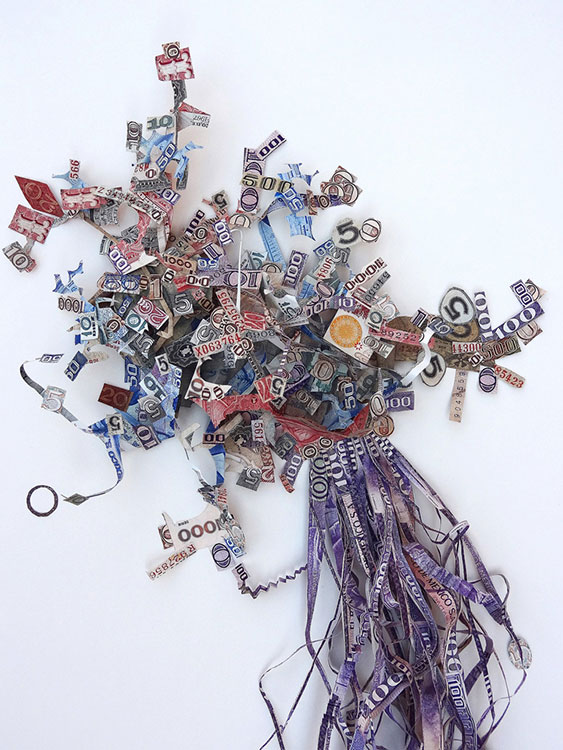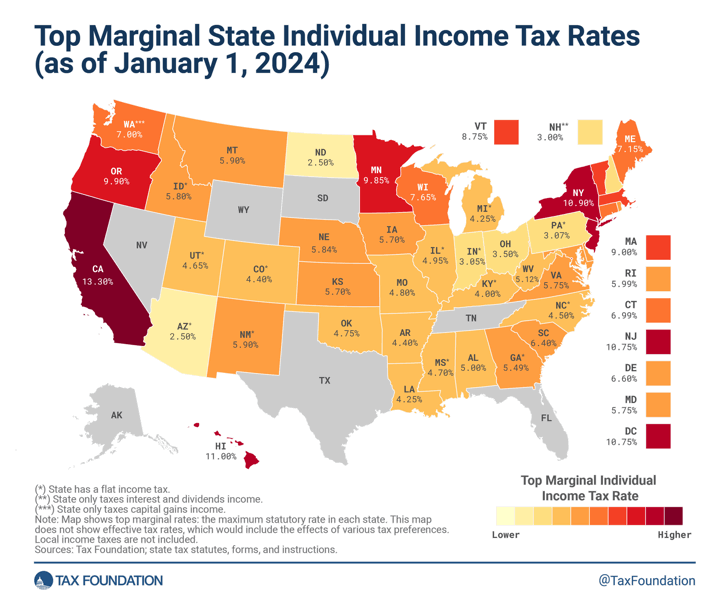Re-posted from “Considering Money Stuff” on Socializing Finance. Money is the most commonly circulating art form. At the same time, payment objects are unstable and excessive, frequently transforming their status from money to trash to art (and back again)....
Re-posted from “Considering Money Stuff” on Socializing Finance.
Money is the most commonly circulating art form. At the same time, payment objects are unstable and excessive, frequently transforming their status from money to trash to art (and back again). Argentinian artist, Máximo González—who I write about—weaves out-of-print Mexican pesos and discarded scraps of currency into fabrics like The World’s Garbage (2012) and creates collages from out-of-circulation currency into Landscapes with Landfill (2003, 2005) transforming the trash of cash into art (potentially convertible to cash).

Máximo González “Basural sin paisaje # 8,” 2015
Through our repeated handling, however, the art of money stuff becomes unremarkable. U.S. dollars—through their uniform color and dimensions—appear particularly adept at fading into the background. By curating payment objects in Paid: Tales of Dongles, Checks, and Other Money Stuff, Bill Maurer and Lana Swartz take these things out of circulation. Each of the chapters sets a particular type of “money stuff” aside and asks the reader to take a moment with it. The chapters reveal the personal stories, history, memories, and beauty bundled up in diverse objects of payment. We, the readers, must pause to consider the complex ways in which we keep track, tally, make jokes, create art, and remember through objects of payment.
Money stuff also inspires art. While Square may have killed the signature—how can we take our finger-painted “signatures” seriously?—it also gave birth to electronic signature art. When asked for their e-signature, artists, as Bill Maurer relays, instead draw scenes such as “the sun setting a house on fire and people running away and one guy on fire.” Not only are these “signatures” accepted by merchants, but also collected in ‘zines devoted to this new art form. More than 250 years prior, Benjamin Franklin pressed foliage—raspberry leaves, fern fronds—into the printing press to prevent the counterfeiting of bills. Printing from nature—as beautiful and seemingly whimsical as it is hard to replicate——Whitney Trettien suggests, “authenticated the strange materiality of money” (2017:163).
Inspired by Maurer’s and Swartz’ remarkable work editing Paid as if curating an imaginary exhibition of money stuff, I ask what the possibilities for curation are within scholarship. To mark the publication of Paid, I have experimented as a collaborative scholar-selector by curating an unofficial soundtrack to the book. I asked chapter writers to send their favorite songs about money to mix with my own. The playlist explores some of the ways in which payment is represented and debated in different genres, time periods, and places. From Horace Andy’s dubby repetition of “Money, money, money is the root of all evil,” to Wu-Tang Clan’s “Cash Rules Everything Around Me,” money stuff inspires music. Not only that, but money—as the sampled clink of coins or whir of bills being counted—becomes music.
Money—or often the idea of if—is also sonified. On YouTube, a two hour-long track of water bubbling, rain, and whirring, “Sleep Programming for Prosperity-‘Millionaire Mindset’ -Attract Abundance & Wealth While You Sleep!” boasts 2 million hits. Hundreds of other (very popular) tracks promise to attract money to the listener through subliminal binaural beats, hypnosis, or spoken affirmations in various languages. In a very different vein, artist and writer, Jace Clayton, is planning a project to sonify the data of financial markets. Gbadu And The Moirai Index, which will take place on Wall Street, by using an algorithm to translate the financial market’s movements into a musical piece for four voices. Each singer plays a mythological character — the Moirai are Greek goddesses of fate and Gbadu is a Dahomey fate deity, and the performance will reflect on the history and architecture of Lower Manhattan.
Through curating writing and music on money stuff, we insist on how money does not flatten relations nor create frictionless universal equivalence. Instead, we draw attention to how we continue to mark, transform, particularize, and aestheticize money and payments at every turn.












